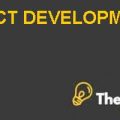
Introduction
ApproTEC Kenya, a non-profit organization, was established by two entrepreneurs Martin Fisher and Nick Moon in Kenya in 1991. The two entrepreneurs having totally different backgrounds were on the same mission. Nick Moon was an entrepreneur from England and was specialized in the field wood construction while fisher was a Ph.D. in mechanics from USA. The two entrepreneurs after working for many development organizations in many underdeveloped countries met in Kenya and worked together in the technical support program of ACTIONAID. The two of them while working together at ACTIONAID decided to form ApproTEC to help the country in solving the issue of growing poverty. The aim and mission of the organization was to provide technologies to small enterprises to overcome the issue of unemployment and to attain sustainable growth in the countries like Kenya, Tanzania, Uganda and other east African countries facing the same issue.
The purpose of this report is to provide assistance to the two entrepreneurs in making the decisions regarding the issues they are facing about the development of the organization. The assistance will be provided by diagnosing the problem, providing a course of alternatives they can adopt, the recommendations that are attainable and feasible with an implementation plan to adopt in applying the proposed recommendations. This report will provide an analysis of the current situation in the diagnosis part and will use that analysis in identifying the issues that the organization is facing. The recommendations will help in strategic decision making for the future and will be supported by an implementation plan that is feasible for the entrepreneurs.
Problem Diagnosis
ApproTEC saw a sustainable growth in the recent years and has helped many poor Africans, especially in Kenya to earn a profitable income. For the internal and external analysis of the organization refers to exhibit 1. The organization is now willing to scale-up operation in terms of technologies and boundaries as well. The questions are how and where they should expand and should they shift the company’s aim from non-profit to a profit organization. The expansion plan includes generating funds for the core infrastructure facilities and upgrading their facilities for the product development and engineering. The next in line is to expand and invest more in the micro-irrigation technology in Kenya, which has shown positive outcomes and sustainable growth.
The protagonists are considering options like Uganda and Rwanda, for expanding and strengthening the manufacturing and marketing bases in these countries. The other option in the plan includes moving towards India and China and to start manufacturing in order to become cost-effective by taking advantage of the manufacturing abilities these countries poses which are better in quality and less expensive. The aim is to scale up the manufacturing abilities, but what options are to be chosen, to establish the impact of its operations in other African countries. The issues they are facing are the resistance from the donors, political condition in Kenya, which will discourage the growth program, outdated engineering facilities, the changes and advancements in the logistic chain and the requirement of funds that needs to be generated from the US office in order to meet the designed aims.
Recommendations
First of all the entrepreneurs needs to convince their donors about the importance of the extra investment in scaling the operational capabilities. They can do so by showing the results of the previous investments, especially the list of the expenses and income they have generated in the past 8 years. This will provide them with a sufficient and authentic proof to encourage the investors about future investment and the return they can get on their investment. By convincing the donors, the organization can improve its marketing and distribution abilities and upgrade its operational activities. This improvement will help in innovative product development and manufacturing.
Further, the organization needs to establish strong and healthy relationships with the wholesalers and retailers in Tanzania and other countries they are willing to expand. These relationships will provide the organization in strengthening the roots in these countries since the condition in Kenya are not favorable currently. On the other hand, the organization should reduce the administrative staff from 15 to 10 and increase the numbers in promotion and marketing as well as in training departments. The entrepreneurs can leverage on the existing abilities and products to raise funds and encourage the US office to help in gaining that extra $1 million required.
Right now the company is mostly dependent on donors and generate only 26% from selling technologies. By improving the research and development department and increasing marketing and promotion of their organization, can increase the sales. The organization needs to improve the percentage of generating..............
This is just a sample partial case solution. Please place the order on the website to order your own originally done case solution.
ApproTEC sells a wide range of technologies to increase the incomes of farmers and other small businesses in East Africa. Having achieved considerable success in its first eight years, the two founders / entrepreneurs are looking for ways to expand the impact of its activities in eastern and southern Africa. The question is, what they should do to achieve this? Includes color exhibits.
To enhance their effectiveness, color cases should be printed in color. "Hide
by V. Kasturi Rangan Source: Harvard Business School 19 pages. Publication Date: November 22, 2002. Prod. #: 503007-PDF-ENG










